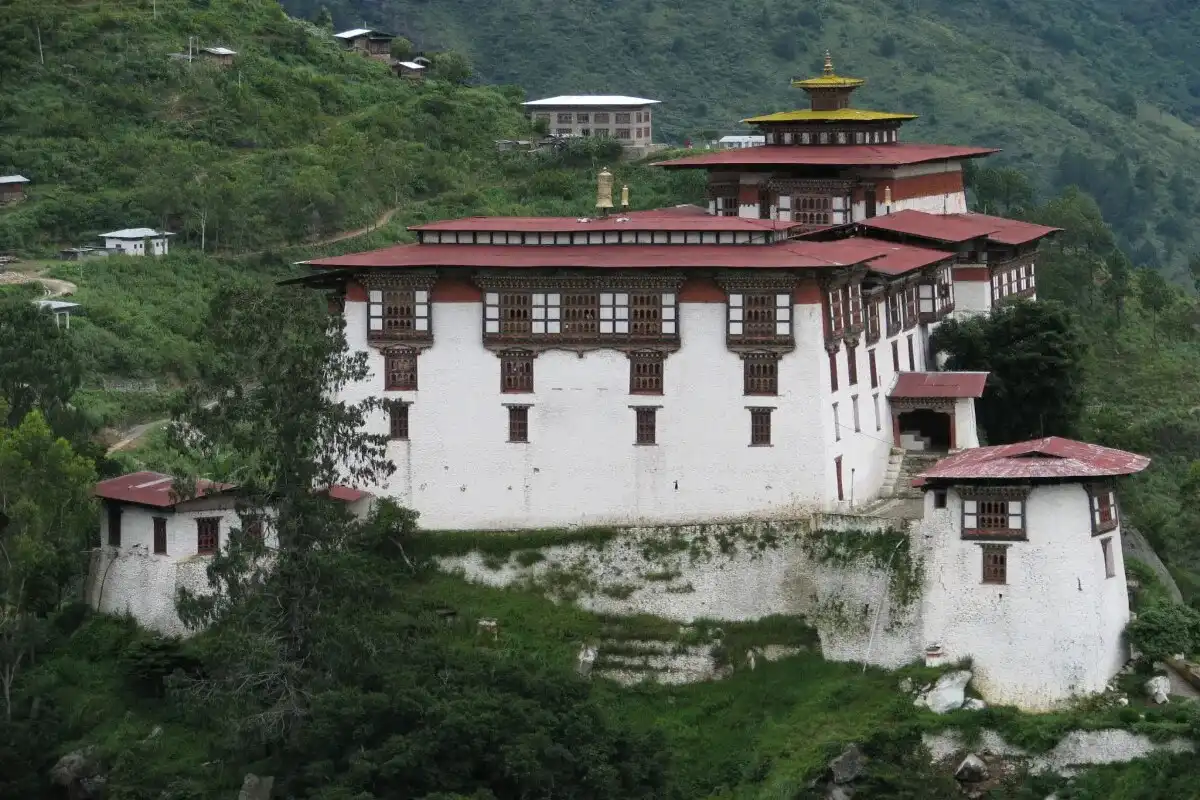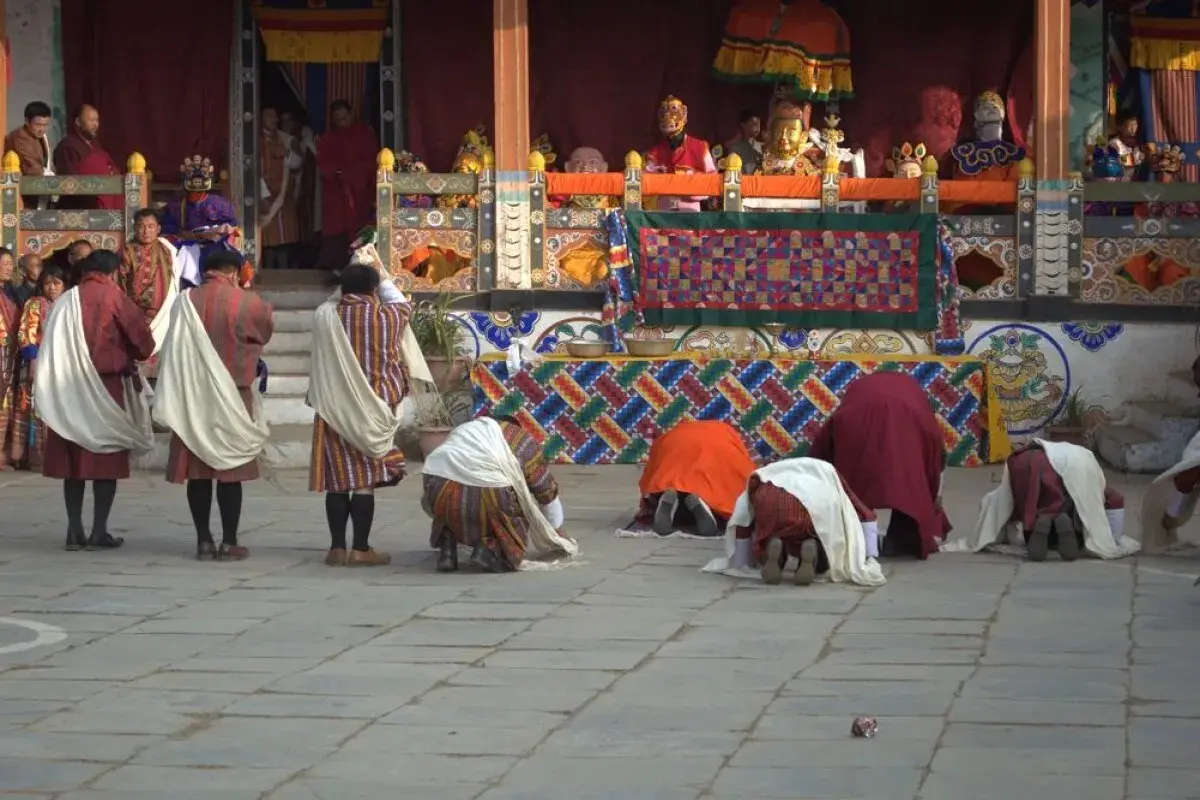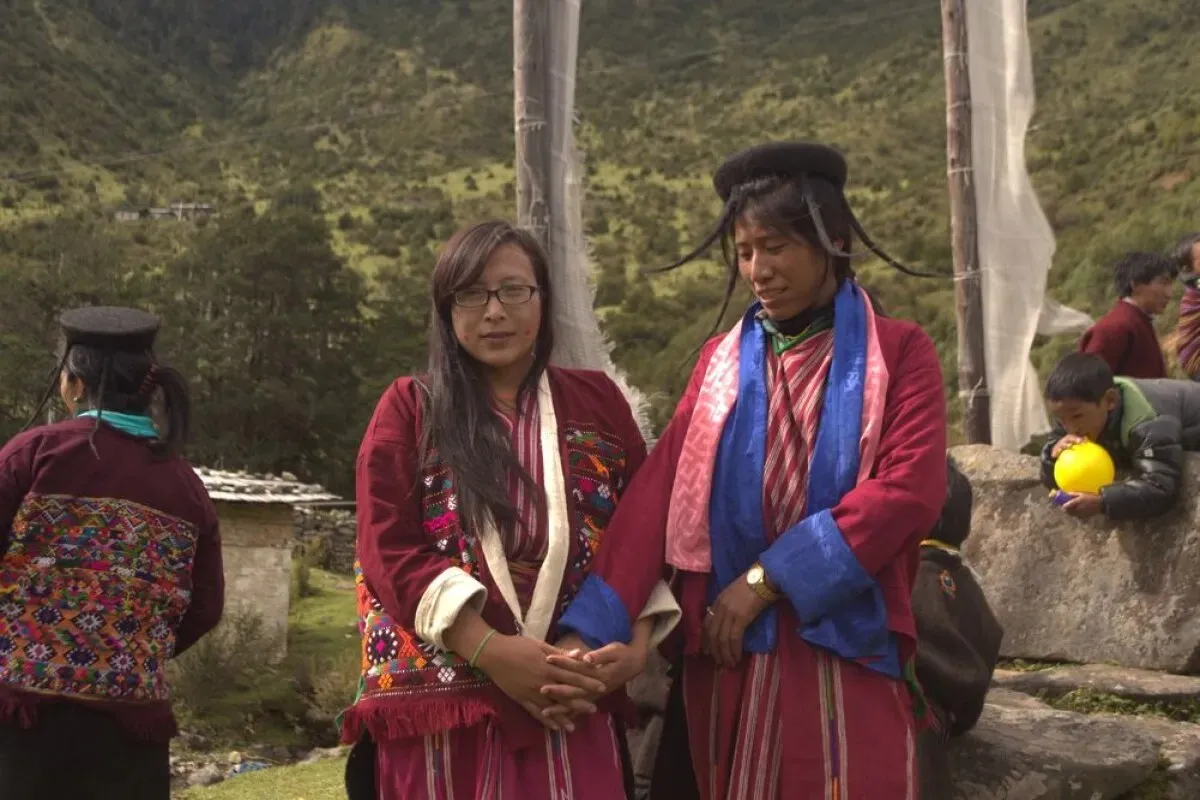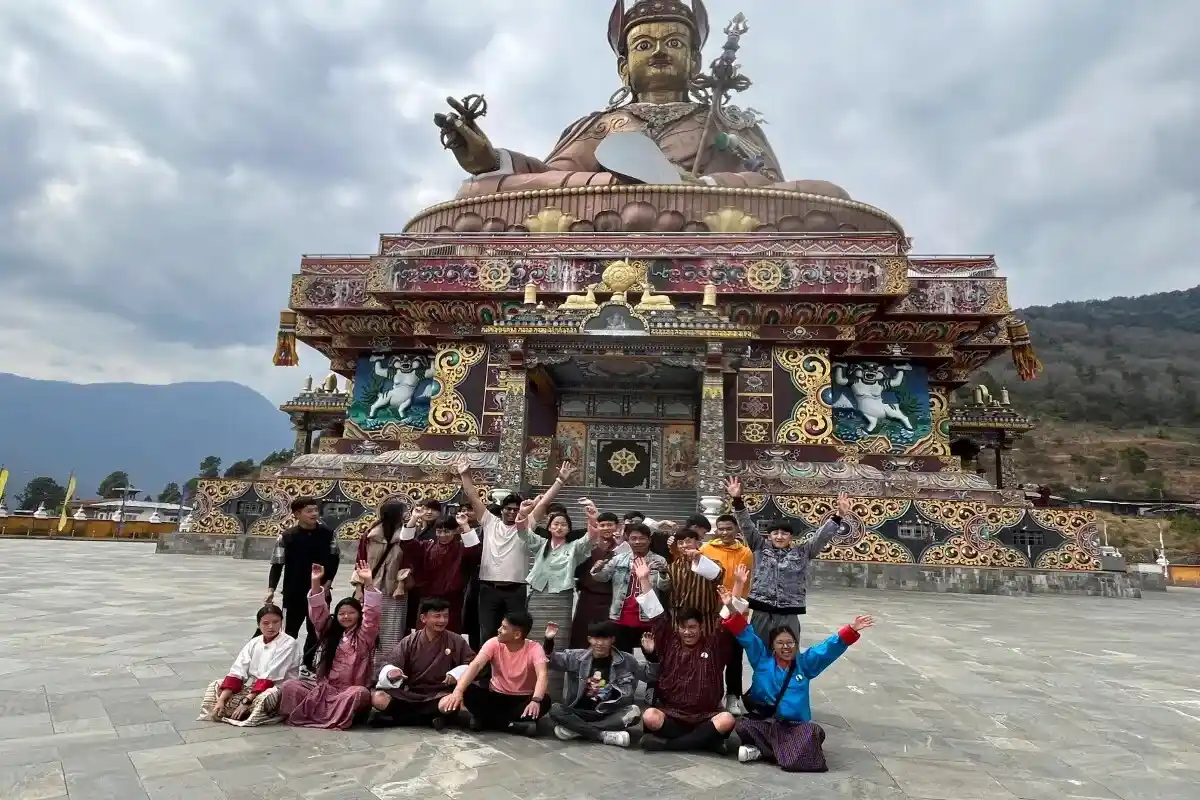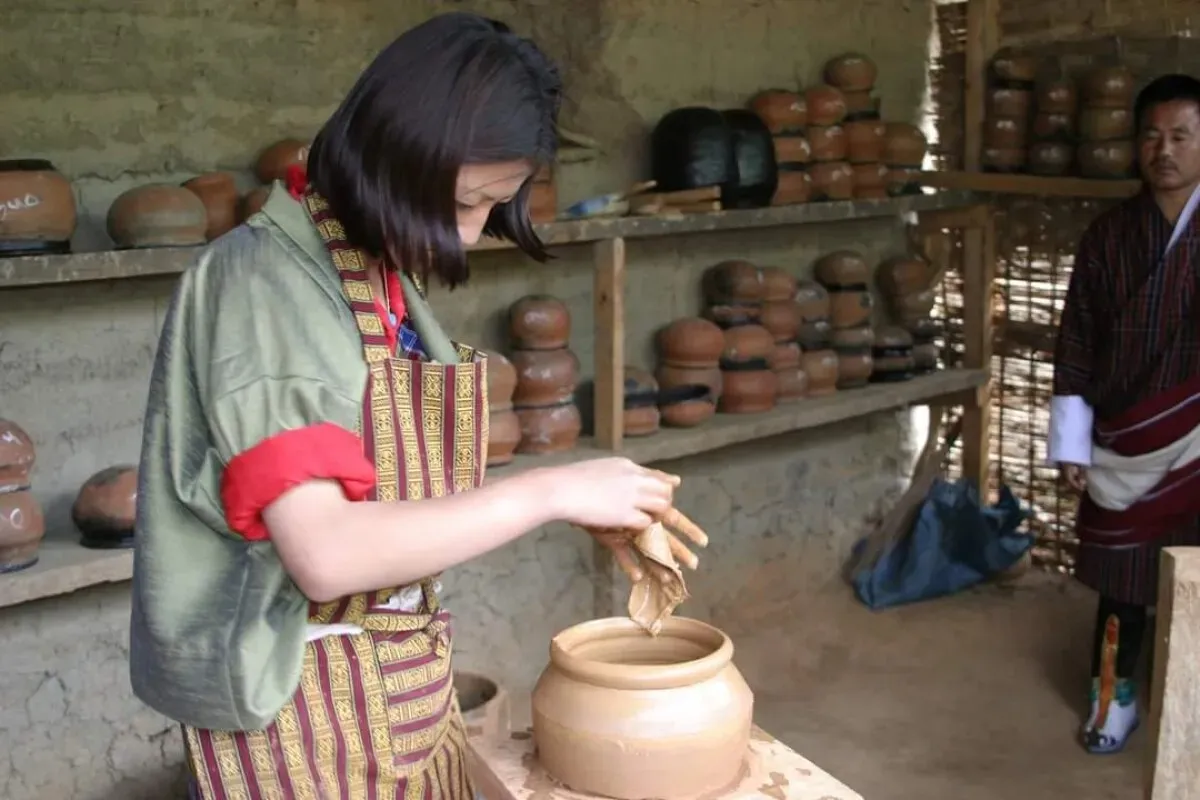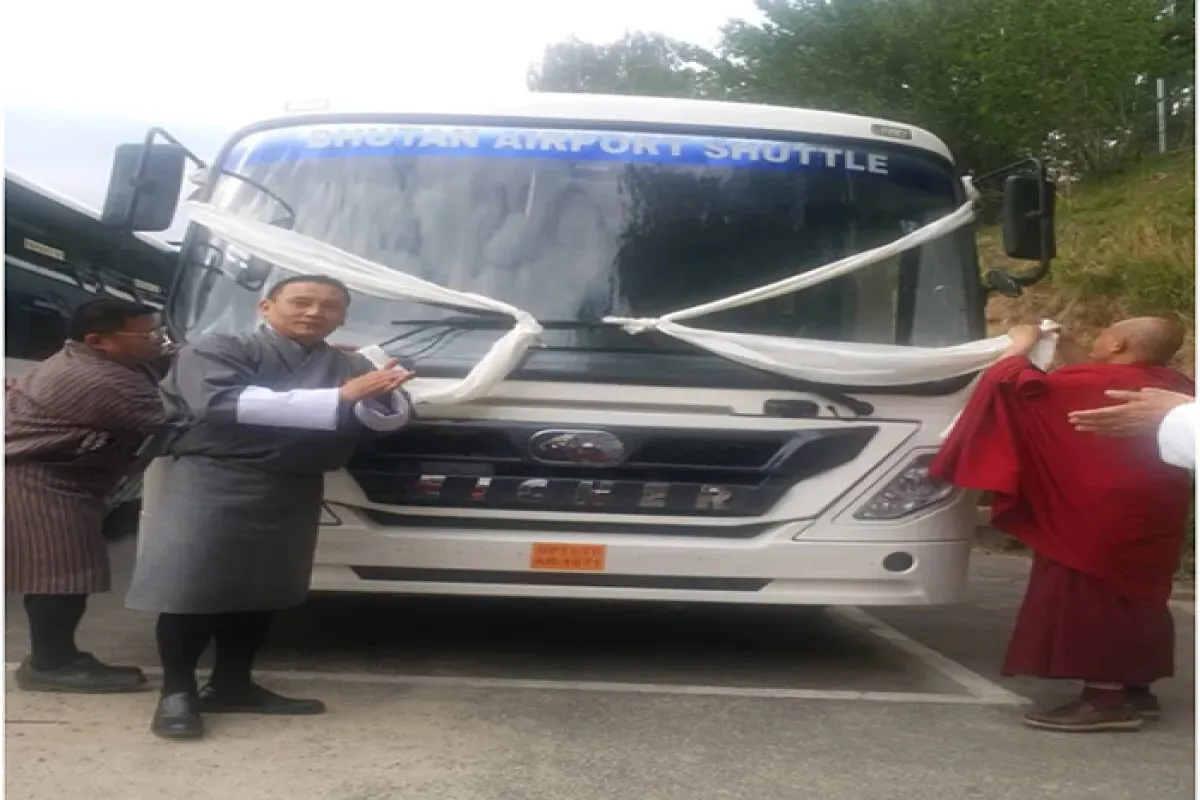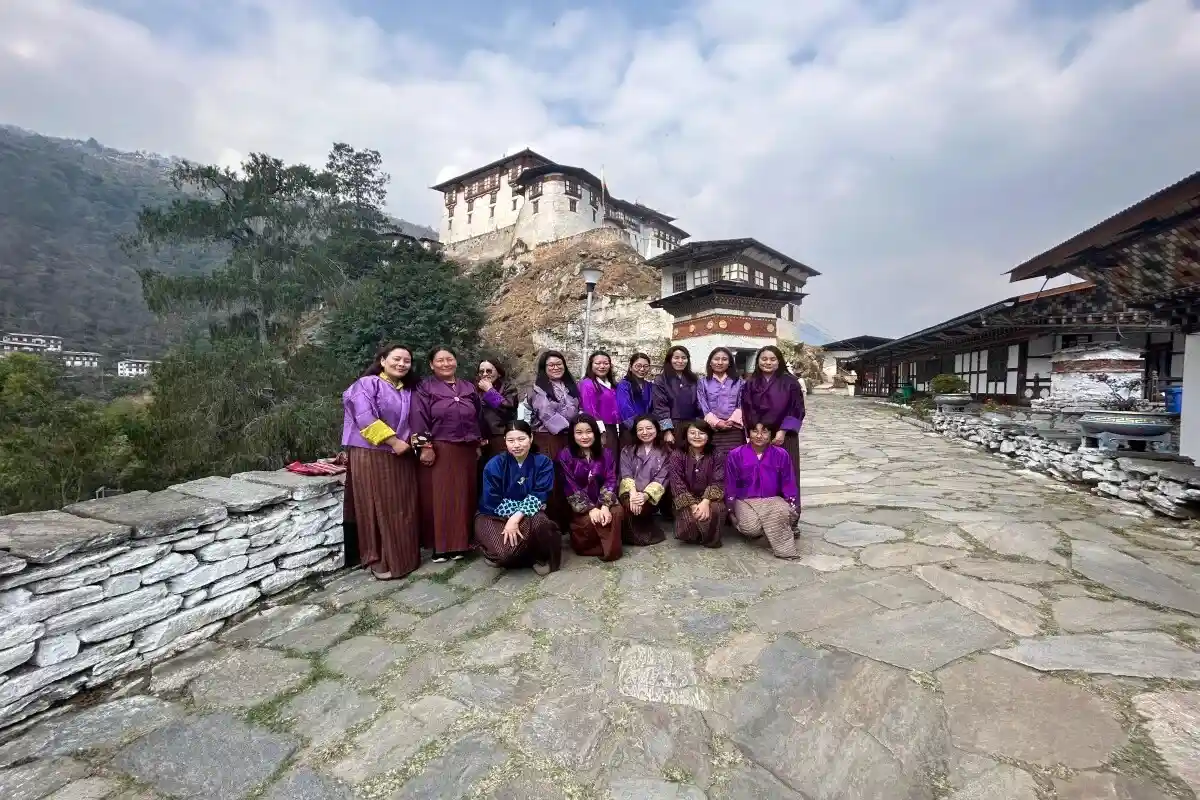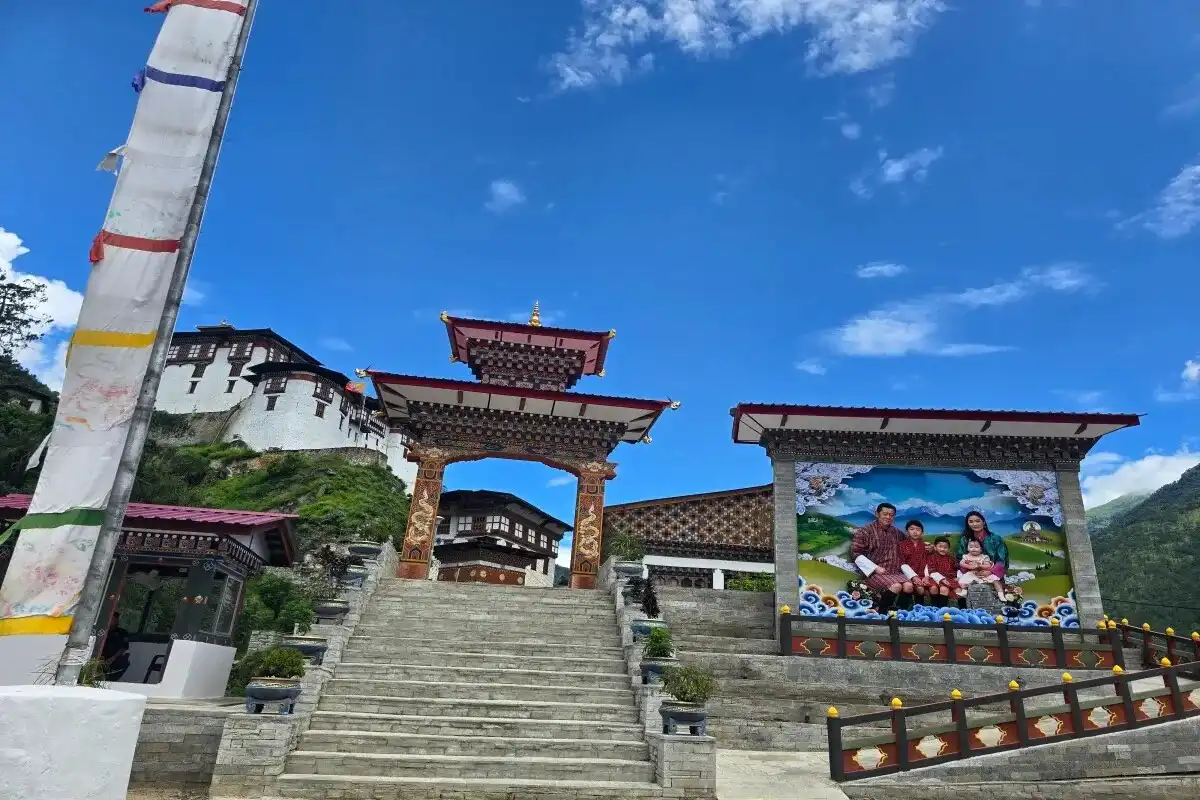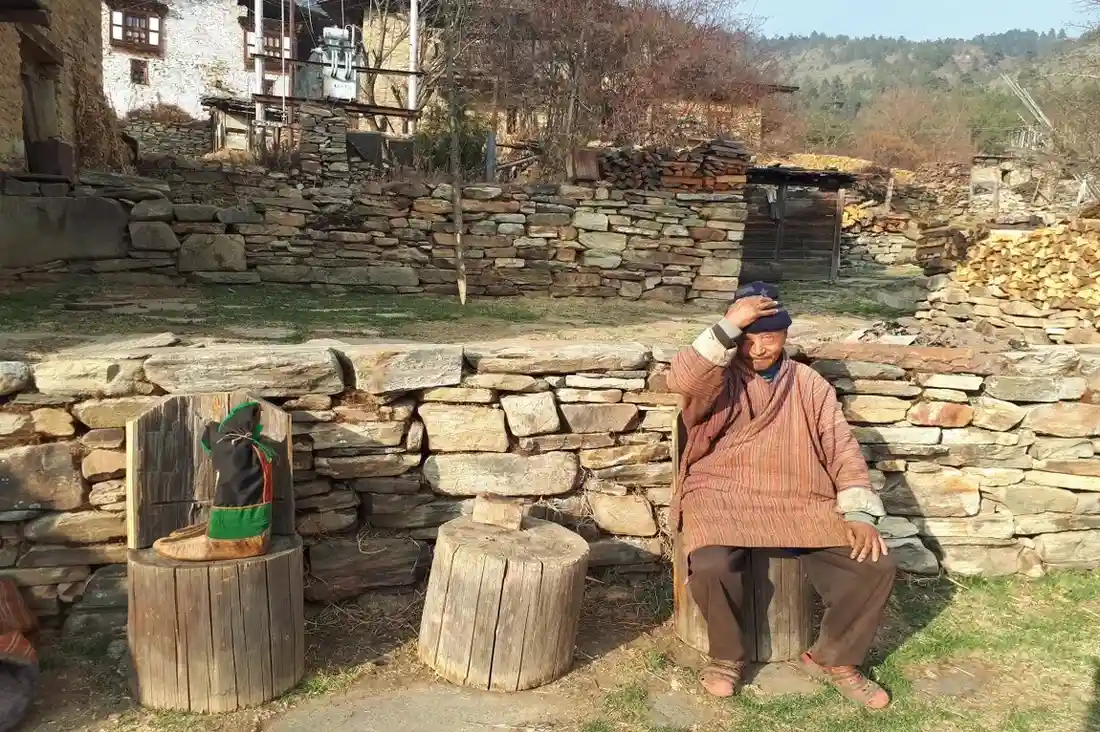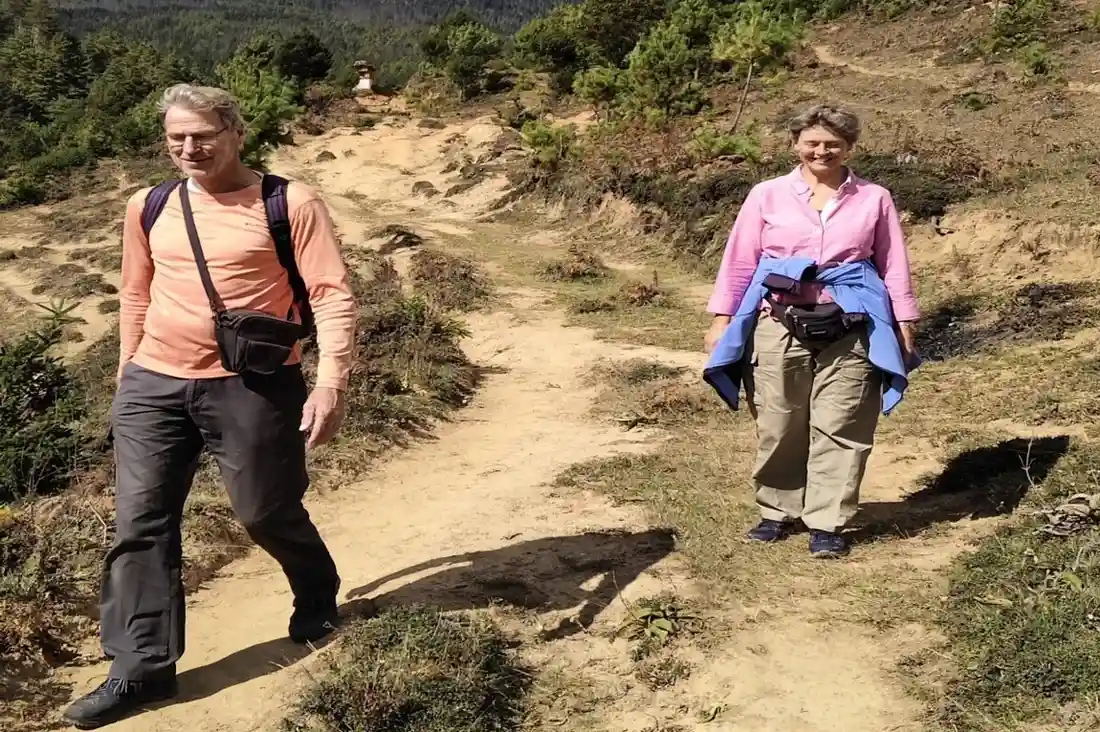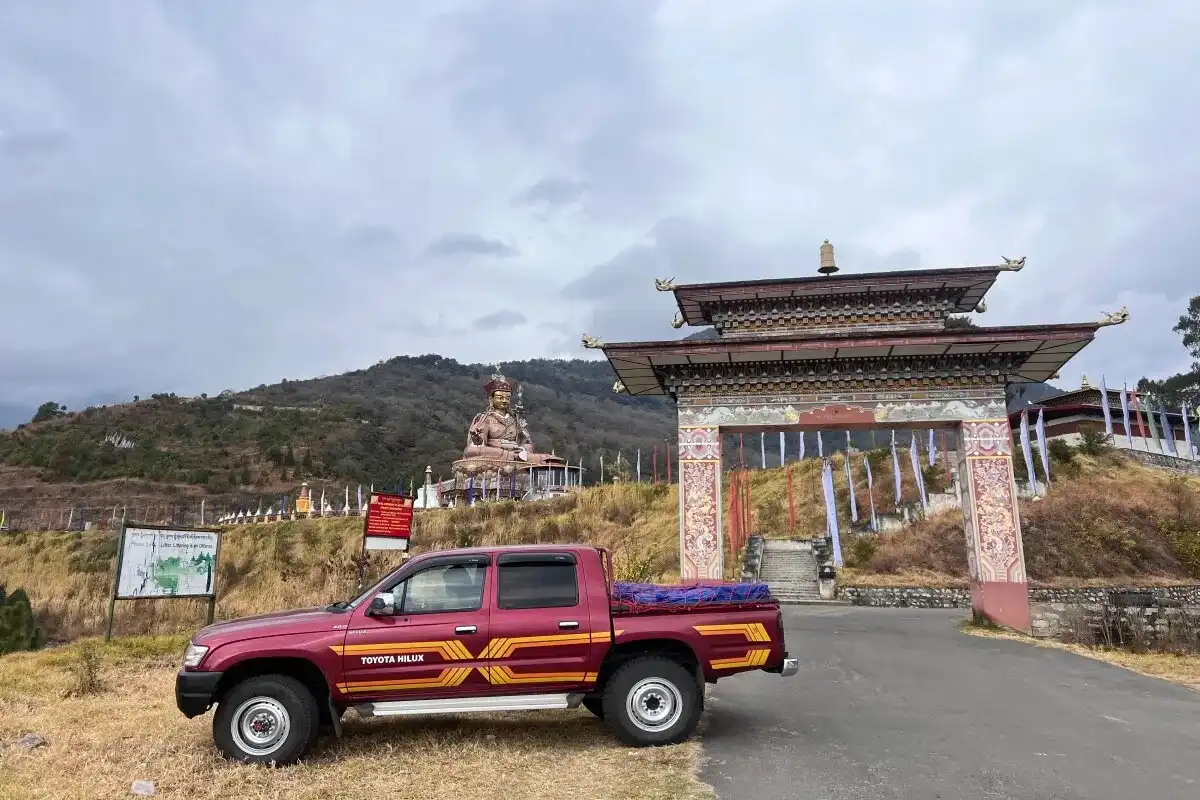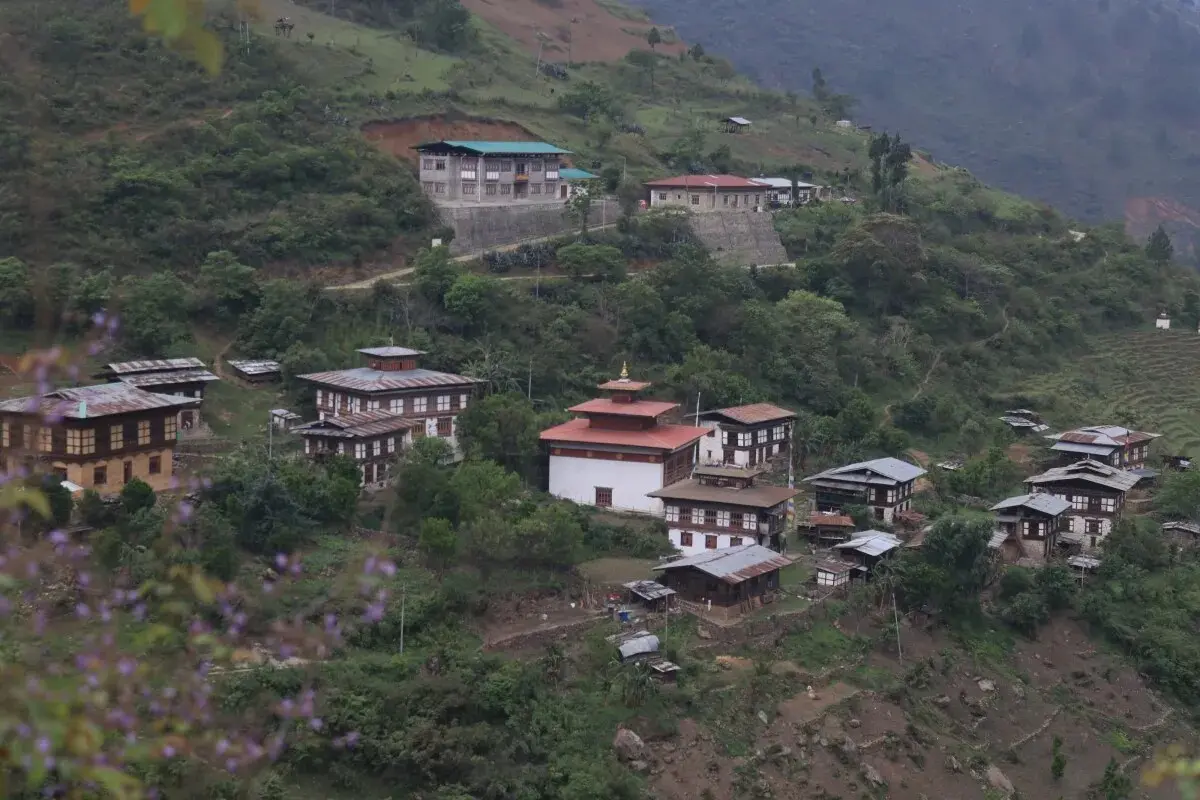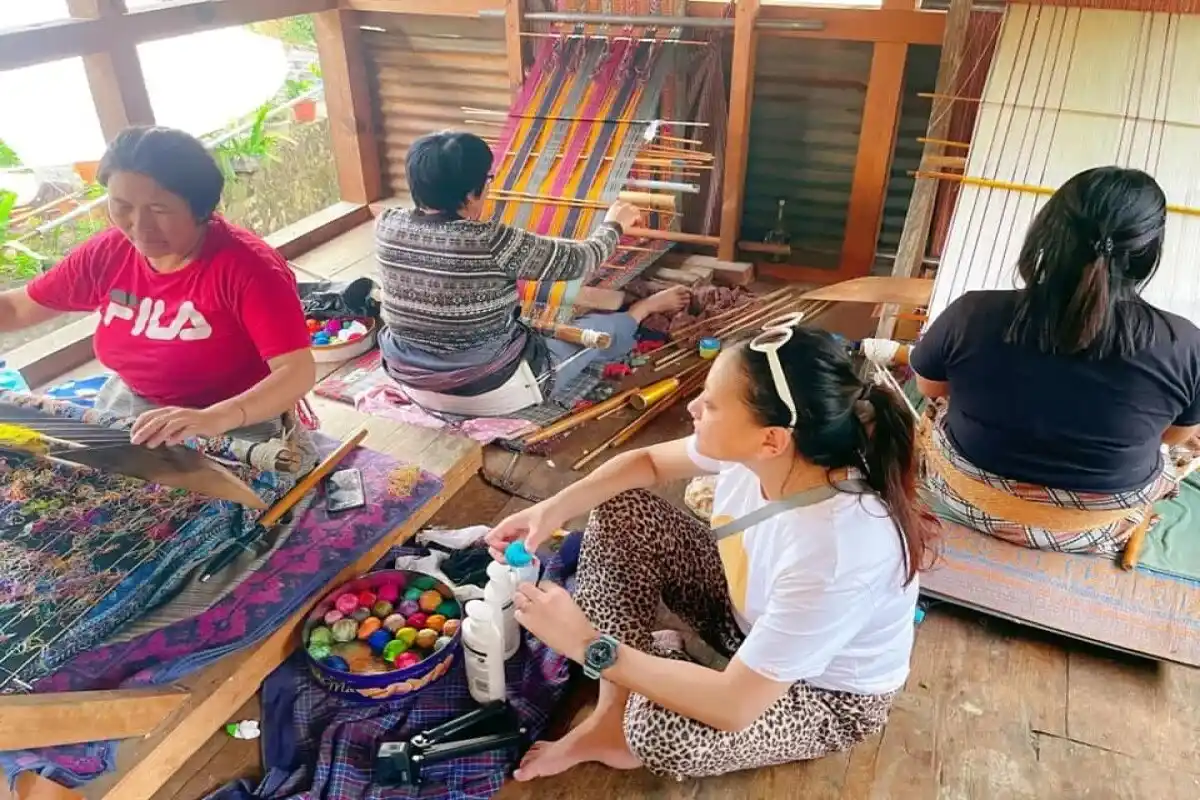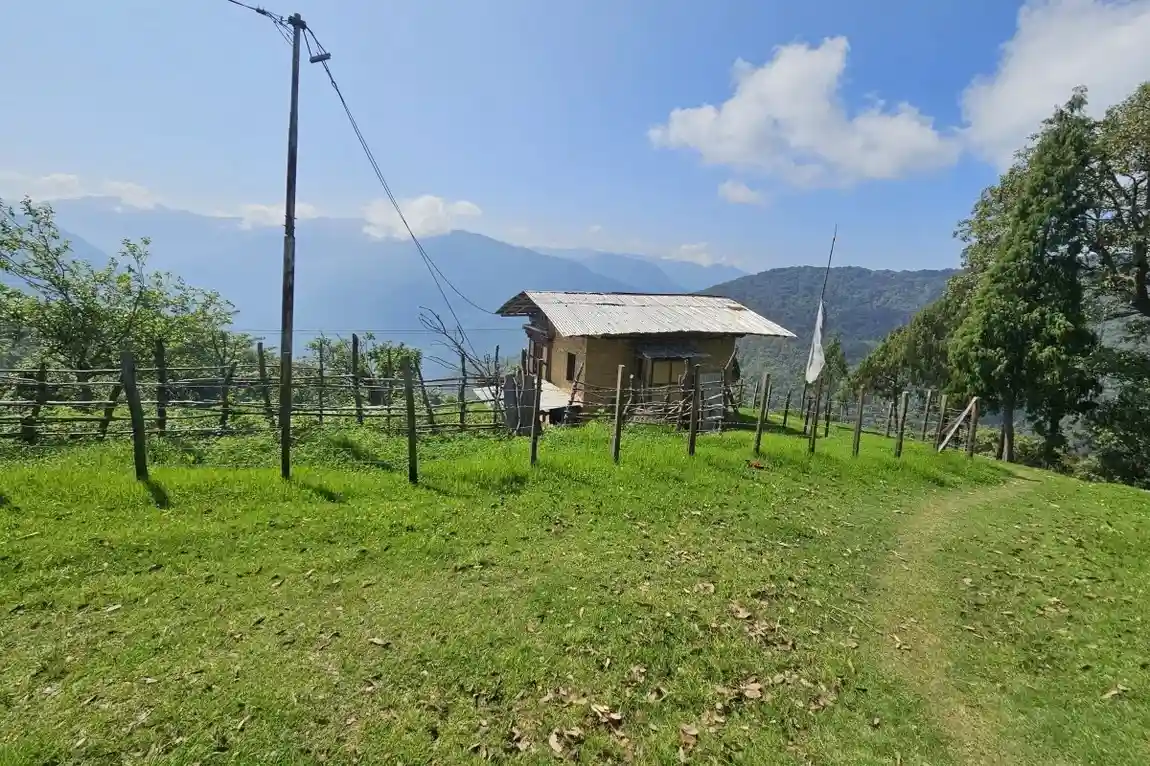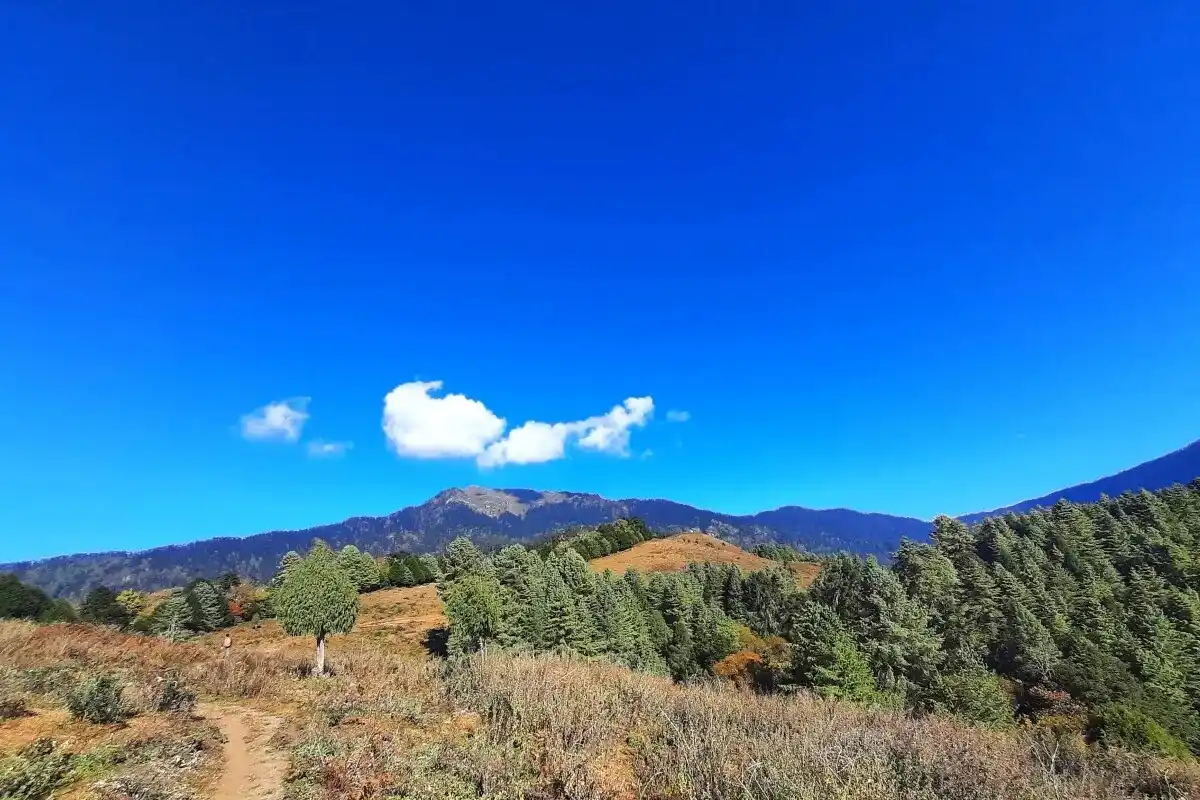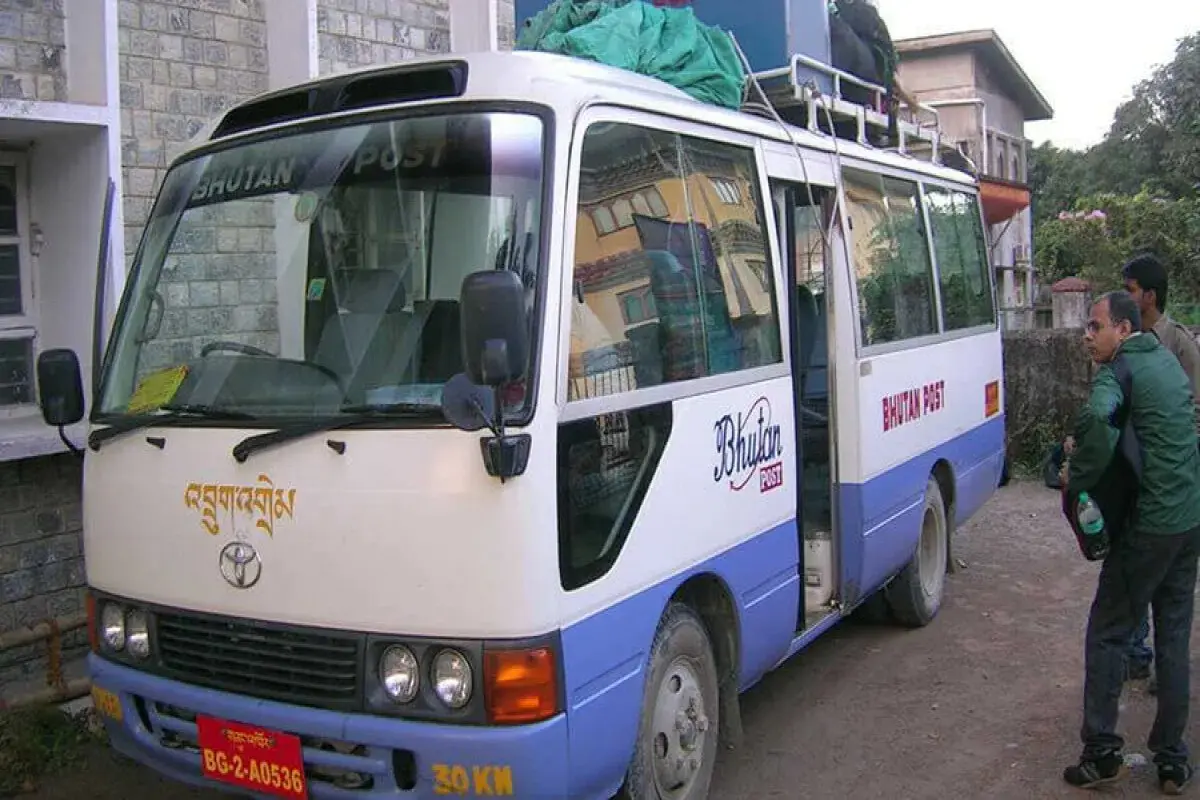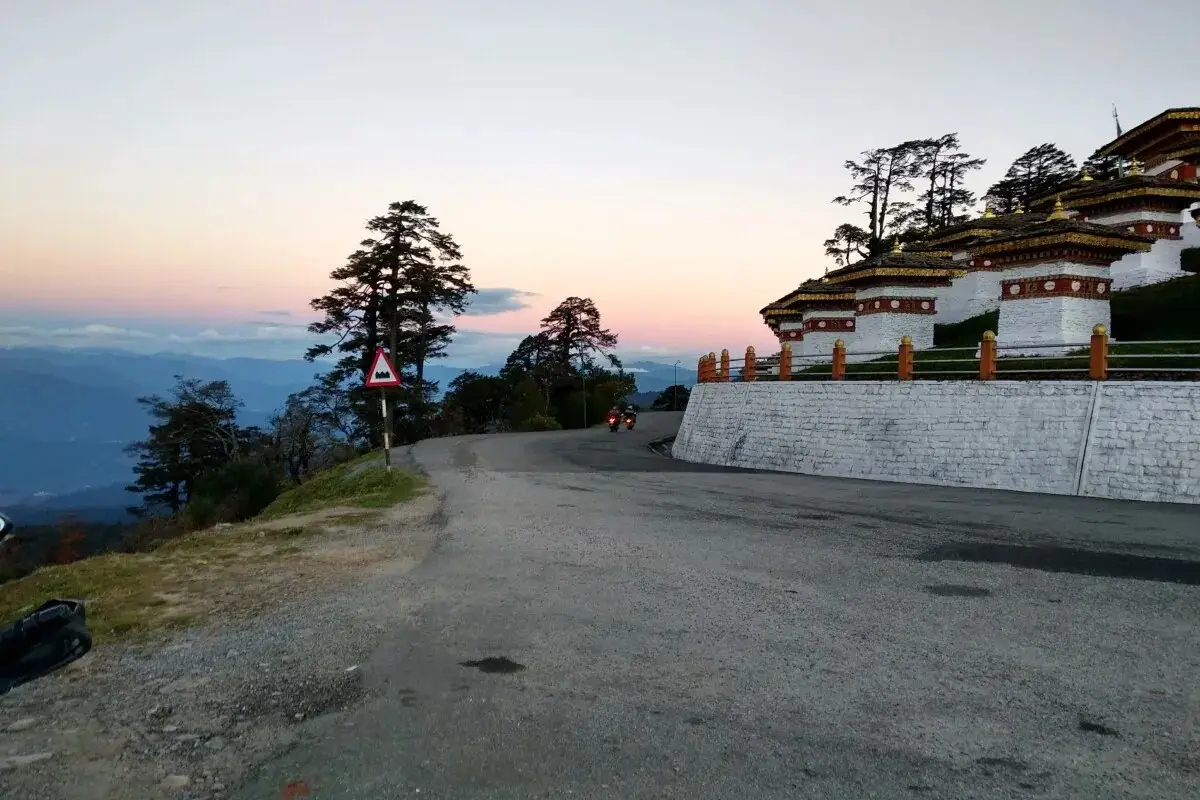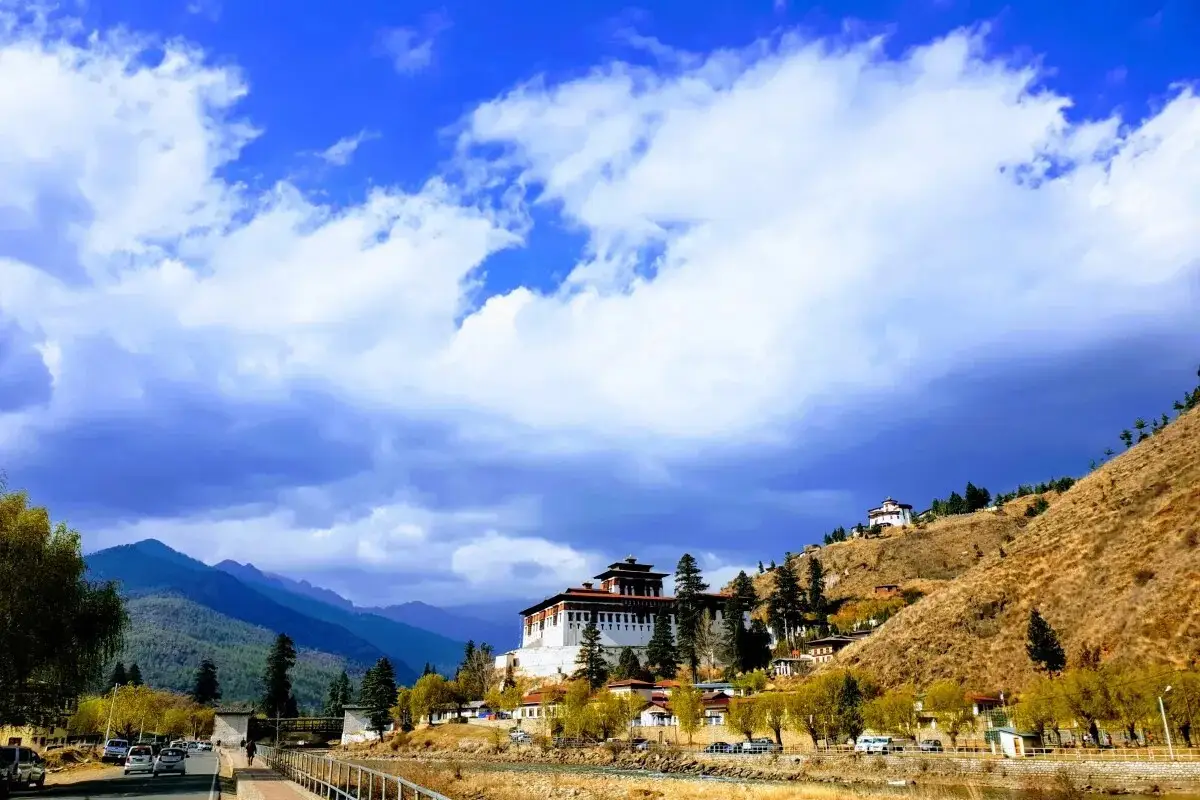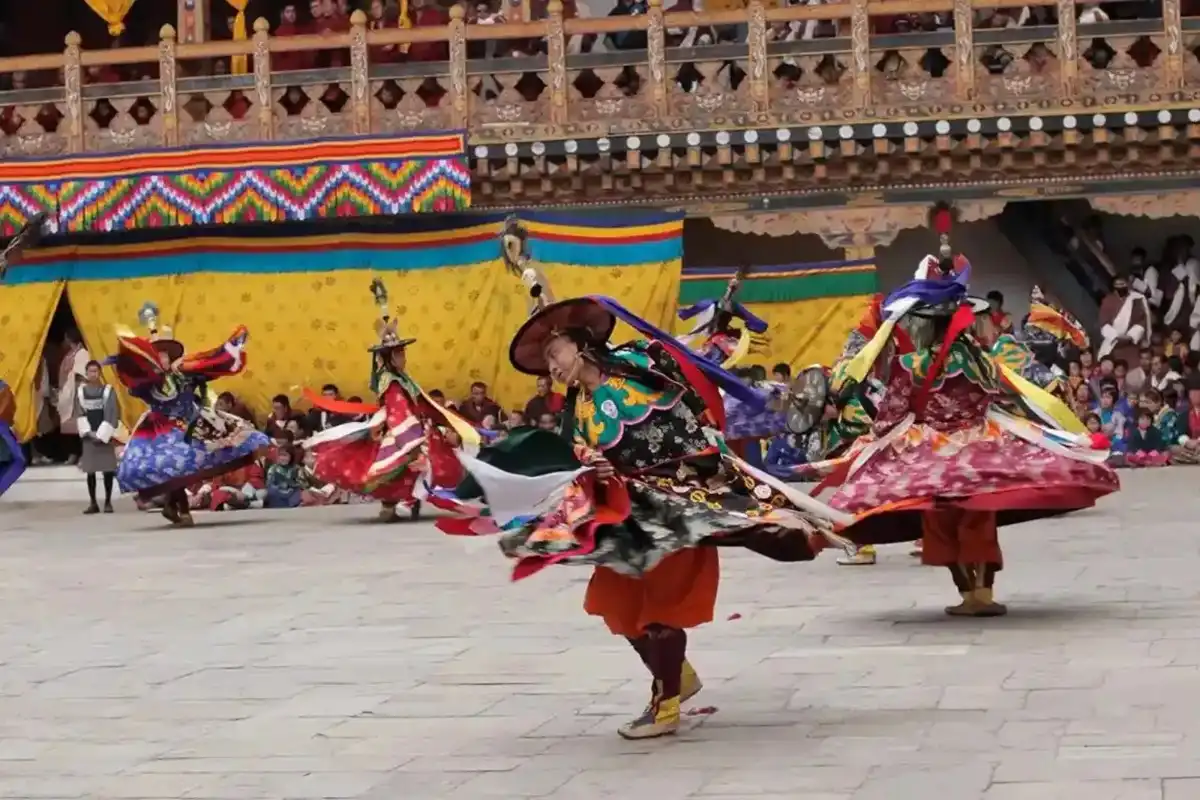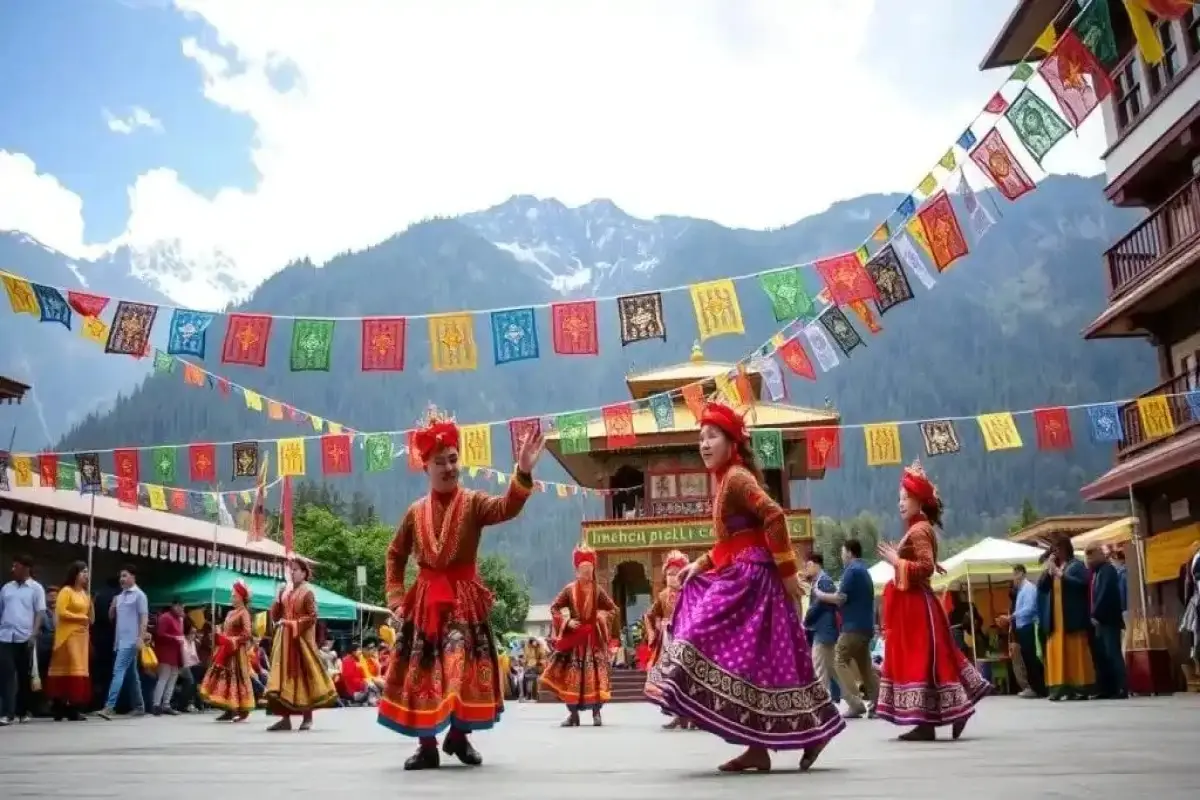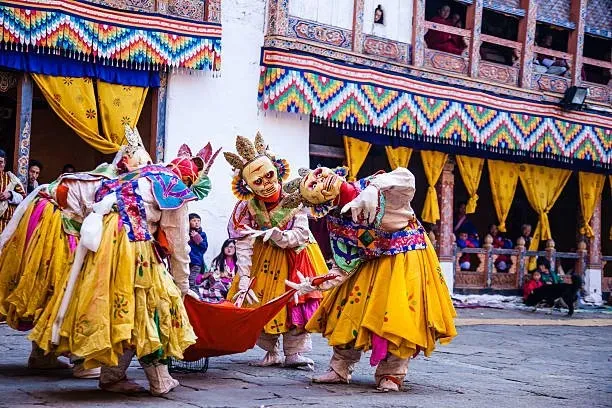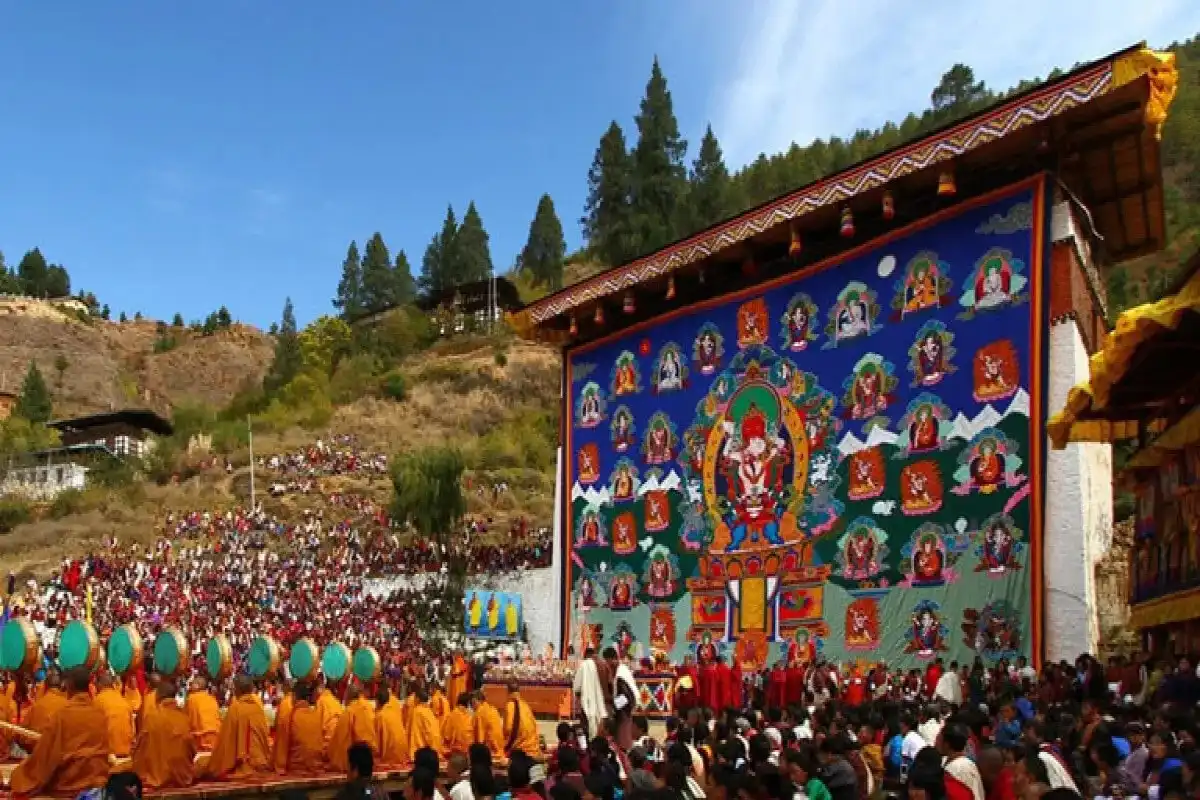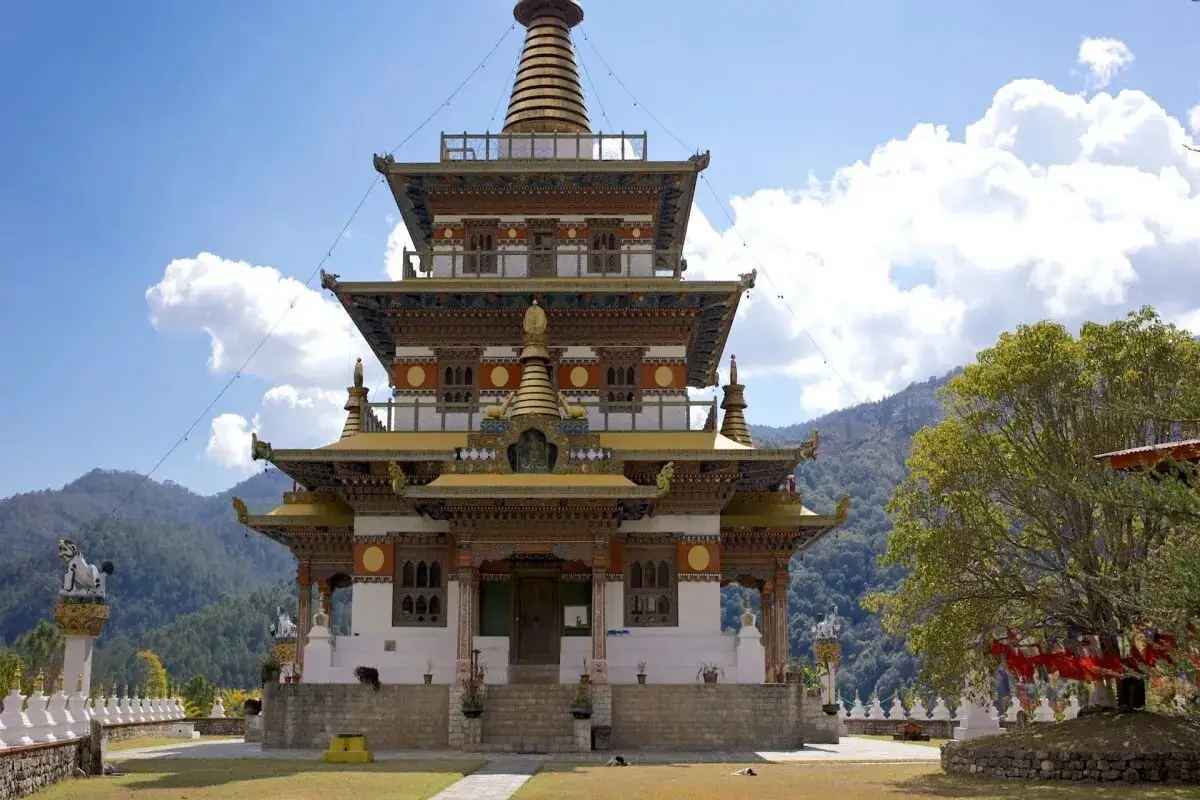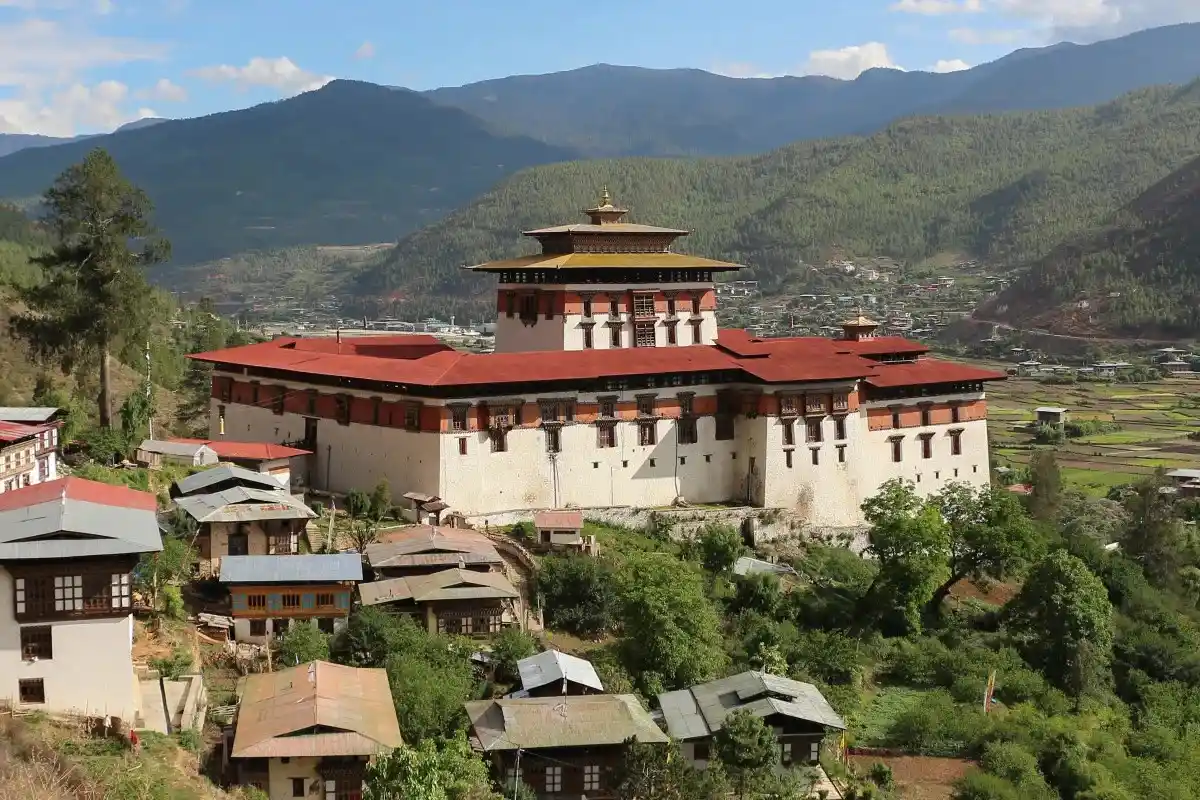Cultural Exploration of Lhuntse - 6 Days
The Lhuntse Dzong was initially constructed in 1543 and Lhuntse has a huge ancestral importance. Lhuntse Valley is a marvel in terms of rural Bhutanese life unlike most tourist sites that deliver disjointed experiences. The festival is also spiritually important because it is also characterised by strong Cham dances and profound spiritual collective happiness in the commemoration of the teachings of Guru Rinpoche. This outlying area is a major pilgrimage site and a gold-mine of Bhutanese history and culture.
Highlights of the tour
- Exploring the Lhuntse Dzong
- Hiking to the Takila Monastery
- Visiting the famous Guru Rinpoche Trail
- Exploring the rural villages and handicrafts
Trip Overview
Highlights of Lhuntse
Not everyone knows a lot about Lhuntse, but it is these traditions, which are unique and preserved, that make it so special. These are the main highlights of the Lhuntse tour:
Exploring the Lhuntse Dzong
Lhuntse Dzong is a fortress that lies in the Lhuntse district. It has huge spiritual and historical importance. It is constructed on a hill facing the Kurichu River. The dzong was built in 1654. Both religious and administrative works of the Lhuntse district are carried out here. It is a Bhutanese architecture built traditionally. The golden roofs, and intricate woodwork of the Dzong were all done without using nails. You will see the monks performing their daily prayers in the temple. The government officials conduct their business in their districts in the adjacent buildings.
The high location of the dzong offers stunning views, especially during sunset and sunrise. The fortress glows on the terraced mountains and snow-capped mountains and you can take some beautiful photos. The interiors are beautiful with paintings everywhere in the interior courtyards, showing the Bhutanese history and Buddhist teachings, and centuries-old artistic culture.
Hiking to the Takila Monastery
The walk to Takila Monastery is one of the most fulfilling treks in Lhuntse. It is a trek that will take you to one of the most significant spiritual places of the region through the trail around mountainous terrain. The path goes through beautiful rhododendron bushes and glacial rivers. You will also get to see the ancestral homes of local families that have resided in these areas for a very long time.
The monastery was founded in the 8th century and has valuable religious objects and manuscripts preserved through all these years by the monks. This sacred place is best for meditating in silence. Most of the visitors have a peaceful experience while the monks are chanting holy scriptures and spinning the prayer wheels.
Visiting the famous Guru Rinpoche Trail
You will walk through the famous Guru Rinpoche Trail. It allows a traveller to follow in the footsteps of Padmasambhava. He is the 8th-century legend and the person to bring Buddhism to Bhutan. The sacred pilgrimage runs across the spiritually significant landscapes and connects the holy sites where the great master in the past meditated.
The trail leads one to holy caves, meditation points, and springs. These places have a myth surrounding Guru Rinpoche and his religious successes and contributions to the history of spreading Buddhist teachings to Bhutan. His hands and feet can be found carved on the rock formations along the trail, giving a physical form to the mythical character. You will see the Buddhist modern version of pilgrimage along this trail, which is still in use to date.
Explore the rural villages and handicrafts
A living museum of Bhutanese crafts, Lhuntse is the place where the old art forms are still practiced in the villages, which are passed on through generations and generations. You will also visit artisans who still maintain these skills, like the complex art of Kishuthara weaving and pottery making, which is done by the same techniques that existed a hundred centuries ago. The famous textile artisans disclose the art of a complex geometrical pattern with cultural symbols identifying social status in the Bhutanese society.
When you visit villages, you can observe the way people live free of modern influences, where families still depend on old ways of farming, cooking, and living in their wooden houses, so well-made in terms of construction. Such encounters with craftsmen are not only learning experiences in old skills, but they also serve the local communities who use such old arts as a source of livelihood.
Why Should You Visit Lhuntse?
Lhuntse is not a destination for a quick visit. This tour is best for travellers who want to experience a side of Bhutan that very less tourists opt for. The cultural life of Lhuntse is as rich as its rugged landscape and lush valleys. It is a peaceful place here where you can feel the real essence of life that is led in harmony with nature and tradition.
- The Royal Connection
Lhuntse is also important in the history of Bhutan because it is the ancestral home of the Wangchuck dynasty, the Royal family of Bhutan. You can get a good understanding of the culture of Bhutan when you walk through the same valleys and villages that the kings of Bhutan lived in.
- Authentic Cultural Experience
Lhuntse is not as tourist-intensive as other places in western Bhutan. Here you will observe the lifestyle of people that has been prevailing over the centuries. In villages, the children still attend school in their traditional ghos and kiras, old women still turn prayer wheels as they trek the mountain paths, and monks preserve the centuries-old practices in monasteries.
- Stunning Natural Beauty
Even the trip to Lhuntse is spectacular. Mountain roads wind through forests, across rivers, and terraced farmlands to form stairs down the side of mountains like green waterfalls. It is a diverse topography, sub-tropical valleys, and alpine meadows with prayer flags.
- Traditional Arts and Crafts
Lhuntse is also famous due to its superior textile culture, especially the well-known Kishuthara weaving. The artisans of the local area design complex patterns by techniques that are inherited from the previous generations. You will also get a chance to visit these master weavers and even get a chance of trying out traditional crafts.
Best Season for Cultural Exploration of Lhuntse
- Spring (March to May)
The spring is taken as the most favorable time to discover the culture in Lhuntse. Days are comfortably warm and nights are cool; therefore, one can walk through villages and visit monasteries. There are picturesque bushes of rhododendrons on the mountainsides, and you can photograph in such wonderful places. It is spring festivals, and it provides you with a sense of the reality of how such local festivals are celebrated.
- Autumn (September to November)
The monsoon season is followed by Autumn, and you will see clear skies, and the surrounding mountains will be visible. It is not too hot and the air is fresh and clean. Harvest season also implies that you can observe the traditional way of farming and engage in the local farming activities.
- Winter (December to February)
Although the temperatures are extremely low during winter, you will have a cultural experience. Villages acquire the atmosphere of a warm, close place where families sit around wood stoves. You will get to feel the most hospitable Bhutanese hospitality. Due to clear mountain views, monasteries, and cultural sites are not overly crowded, which means that you can have a more peaceful experience.
- Summer (June to August)
The terrain becomes vibrant and the weather does not stop the cultural activities. The majorities of the traditional festivals are held during summer months and you will observe how the change of the lifestyle directly corresponds to the seasons.
Spiritual Significance
There are smaller monasteries and chortens (stupas), and prayer flags fluttering in the air in Lhuntse. You feel spiritually connected in such a peaceful place. You can also meditate there for some time. The atmosphere is calm and may be quite soothing and inspiring.
Temperature Conditions
It is a temperate climate that has much seasonal change. During summer, the temperature ranges between 25 and 15 °C during the day and night, respectively. Winter is characterized by about 10 °C daytime temperatures with freezing temperatures at night. Spring and autumn are the most comfortable seasons as the temperature during the day is about 20 degrees.
Dress Codes
When you visit Lhuntse, you need to wear the right clothes that do not offend the people of the area. It is also important to wear conservative clothes that cover the shoulders and knees, especially when one is visiting religious places. We give advice on the local Bhutanese attire that they can use on special occasions.
Things to Do in Lhuntse
Visit the Lhuntse Dzong
Explore this fortress, its ancient temples, and enjoy the stunning views of the valley.
See the Takila Guru Statue
Drive to this massive statue of Guru Rinpoche, a site of great spiritual importance and breathtaking scenery.
Observe Weaving
Spend time in Khoma Village to witness the intricate craft of Kishuthara weaving and interact with the local artisans.
Discover Traditional Pottery
Visit Gangzur Village to watch local women create beautiful earthenware using traditional techniques.
Hike to Sacred Sites
Trek to Jangchubling Monastery or other nearby sacred spots to enjoy the serene natural environment.
Explore Royal History
Tour the Dungkar Nagtshang, the ancestral home of the Wangchuck Dynasty, and delve into the country's rich royal history.
Experience Local Festivals
If your trip aligns with the timing (usually November/December), attend the Lhuntse Tshechu festival for a vibrant display of masked dances and cultural celebrations.
Conclusion
The Lhuntse 6-day cultural exploration is not just a vacation; it is an enlightening experience you can have at an authentic cultural landscape in the world. Lhuntse is a place where old customs are followed. The wisdom and practices of the past is still followed to run everyday life. This shows that the place is away from modernization.
The tour describes the relationship between the landscape, spirituality, and community. Eating with a local family, participating in a ceremony in the monastery, learning some traditional crafts, watching one of the seasonal festivals, every moment will help you to feel the Bhutanese culture.
Highlights of Lhuntse
Not everyone knows a lot about Lhuntse, but it is these traditions, which are unique and preserved, that make it so special. These are the main highlights of the Lhuntse tour:
Exploring the Lhuntse Dzong
Lhuntse Dzong is a fortress that lies in the Lhuntse district. It has huge spiritual and historical importance. It is constructed on a hill facing the Kurichu River. The dzong was built in 1654. Both religious and administrative works of the Lhuntse district are carried out here. It is a Bhutanese architecture built traditionally. The golden roofs, and intricate woodwork of the Dzong were all done without using nails. You will see the monks performing their daily prayers in the temple. The government officials conduct their business in their districts in the adjacent buildings.
The high location of the dzong offers stunning views, especially during sunset and sunrise. The fortress glows on the terraced mountains and snow-capped mountains and you can take some beautiful photos. The interiors are beautiful with paintings everywhere in the interior courtyards, showing the Bhutanese history and Buddhist teachings, and centuries-old artistic culture.
Hiking to the Takila Monastery
The walk to Takila Monastery is one of the most fulfilling treks in Lhuntse. It is a trek that will take you to one of the most significant spiritual places of the region through the trail around mountainous terrain. The path goes through beautiful rhododendron bushes and glacial rivers. You will also get to see the ancestral homes of local families that have resided in these areas for a very long time.
The monastery was founded in the 8th century and has valuable religious objects and manuscripts preserved through all these years by the monks. This sacred place is best for meditating in silence. Most of the visitors have a peaceful experience while the monks are chanting holy scriptures and spinning the prayer wheels.
Visiting the famous Guru Rinpoche Trail
You will walk through the famous Guru Rinpoche Trail. It allows a traveller to follow in the footsteps of Padmasambhava. He is the 8th-century legend and the person to bring Buddhism to Bhutan. The sacred pilgrimage runs across the spiritually significant landscapes and connects the holy sites where the great master in the past meditated.
The trail leads one to holy caves, meditation points, and springs. These places have a myth surrounding Guru Rinpoche and his religious successes and contributions to the history of spreading Buddhist teachings to Bhutan. His hands and feet can be found carved on the rock formations along the trail, giving a physical form to the mythical character. You will see the Buddhist modern version of pilgrimage along this trail, which is still in use to date.
Explore the rural villages and handicrafts
A living museum of Bhutanese crafts, Lhuntse is the place where the old art forms are still practiced in the villages, which are passed on through generations and generations. You will also visit artisans who still maintain these skills, like the complex art of Kishuthara weaving and pottery making, which is done by the same techniques that existed a hundred centuries ago. The famous textile artisans disclose the art of a complex geometrical pattern with cultural symbols identifying social status in the Bhutanese society.
When you visit villages, you can observe the way people live free of modern influences, where families still depend on old ways of farming, cooking, and living in their wooden houses, so well-made in terms of construction. Such encounters with craftsmen are not only learning experiences in old skills, but they also serve the local communities who use such old arts as a source of livelihood.
Why Should You Visit Lhuntse?
Lhuntse is not a destination for a quick visit. This tour is best for travellers who want to experience a side of Bhutan that very less tourists opt for. The cultural life of Lhuntse is as rich as its rugged landscape and lush valleys. It is a peaceful place here where you can feel the real essence of life that is led in harmony with nature and tradition.
- The Royal Connection
Lhuntse is also important in the history of Bhutan because it is the ancestral home of the Wangchuck dynasty, the Royal family of Bhutan. You can get a good understanding of the culture of Bhutan when you walk through the same valleys and villages that the kings of Bhutan lived in.
- Authentic Cultural Experience
Lhuntse is not as tourist-intensive as other places in western Bhutan. Here you will observe the lifestyle of people that has been prevailing over the centuries. In villages, the children still attend school in their traditional ghos and kiras, old women still turn prayer wheels as they trek the mountain paths, and monks preserve the centuries-old practices in monasteries.
- Stunning Natural Beauty
Even the trip to Lhuntse is spectacular. Mountain roads wind through forests, across rivers, and terraced farmlands to form stairs down the side of mountains like green waterfalls. It is a diverse topography, sub-tropical valleys, and alpine meadows with prayer flags.
- Traditional Arts and Crafts
Lhuntse is also famous due to its superior textile culture, especially the well-known Kishuthara weaving. The artisans of the local area design complex patterns by techniques that are inherited from the previous generations. You will also get a chance to visit these master weavers and even get a chance of trying out traditional crafts.
Best Season for Cultural Exploration of Lhuntse
- Spring (March to May)
The spring is taken as the most favorable time to discover the culture in Lhuntse. Days are comfortably warm and nights are cool; therefore, one can walk through villages and visit monasteries. There are picturesque bushes of rhododendrons on the mountainsides, and you can photograph in such wonderful places. It is spring festivals, and it provides you with a sense of the reality of how such local festivals are celebrated.
- Autumn (September to November)
The monsoon season is followed by Autumn, and you will see clear skies, and the surrounding mountains will be visible. It is not too hot and the air is fresh and clean. Harvest season also implies that you can observe the traditional way of farming and engage in the local farming activities.
- Winter (December to February)
Although the temperatures are extremely low during winter, you will have a cultural experience. Villages acquire the atmosphere of a warm, close place where families sit around wood stoves. You will get to feel the most hospitable Bhutanese hospitality. Due to clear mountain views, monasteries, and cultural sites are not overly crowded, which means that you can have a more peaceful experience.
- Summer (June to August)
The terrain becomes vibrant and the weather does not stop the cultural activities. The majorities of the traditional festivals are held during summer months and you will observe how the change of the lifestyle directly corresponds to the seasons.
Spiritual Significance
There are smaller monasteries and chortens (stupas), and prayer flags fluttering in the air in Lhuntse. You feel spiritually connected in such a peaceful place. You can also meditate there for some time. The atmosphere is calm and may be quite soothing and inspiring.
Temperature Conditions
It is a temperate climate that has much seasonal change. During summer, the temperature ranges between 25 and 15 °C during the day and night, respectively. Winter is characterized by about 10 °C daytime temperatures with freezing temperatures at night. Spring and autumn are the most comfortable seasons as the temperature during the day is about 20 degrees.
Dress Codes
When you visit Lhuntse, you need to wear the right clothes that do not offend the people of the area. It is also important to wear conservative clothes that cover the shoulders and knees, especially when one is visiting religious places. We give advice on the local Bhutanese attire that they can use on special occasions.
Things to Do in Lhuntse
Visit the Lhuntse Dzong
Explore this fortress, its ancient temples, and enjoy the stunning views of the valley.
See the Takila Guru Statue
Drive to this massive statue of Guru Rinpoche, a site of great spiritual importance and breathtaking scenery.
Observe Weaving
Spend time in Khoma Village to witness the intricate craft of Kishuthara weaving and interact with the local artisans.
Discover Traditional Pottery
Visit Gangzur Village to watch local women create beautiful earthenware using traditional techniques.
Hike to Sacred Sites
Trek to Jangchubling Monastery or other nearby sacred spots to enjoy the serene natural environment.
Explore Royal History
Tour the Dungkar Nagtshang, the ancestral home of the Wangchuck Dynasty, and delve into the country's rich royal history.
Experience Local Festivals
If your trip aligns with the timing (usually November/December), attend the Lhuntse Tshechu festival for a vibrant display of masked dances and cultural celebrations.
Conclusion
The Lhuntse 6-day cultural exploration is not just a vacation; it is an enlightening experience you can have at an authentic cultural landscape in the world. Lhuntse is a place where old customs are followed. The wisdom and practices of the past is still followed to run everyday life. This shows that the place is away from modernization.
The tour describes the relationship between the landscape, spirituality, and community. Eating with a local family, participating in a ceremony in the monastery, learning some traditional crafts, watching one of the seasonal festivals, every moment will help you to feel the Bhutanese culture.
Short Itinerary
Arrive in Lhuntse, explore Lhuntse Dzong, old courtyards, temples, and architecture
Visit Ura Village, walk around traditional houses, interact with locals, learn customs
Hike to Takila Monastery, enjoy mountain views, meditate at the Guru Rinpoche statue
Explore rural villages, witness silk weaving in Khoma and pottery making in Gangzur
Walk part of the sacred Guru Rinpoche Trail, visit spiritually important sites
Travel back to Paro, enjoy scenic views and reflect on Lhuntse’s culture and traditions
Cultural Exploration of Lhuntse Itinerary
You will begin your cultural trip with a drive to the distant rural area of Lhuntse. As soon as you arrive at the place, you will get to know the history of this area. This fortress is situated on the top of a hill, and it faces the Kurichu River. You will visit its old courtyards, temples, and detailed architecture, and its history and spirituality in the afternoon.
Today we will have a beautiful day trip to the Ura Valley. This village is located in Bumthang and is famous for the amazing beauty of the traditional houses and the nature. You will get to walk around the village, communicate with the locals, and learn about the customs and traditions of this village.
You are going to have breakfast and head to Takila Monastery. This route is covered with lush trees and an exquisite view of the mountains. The last place of visit is the monastery itself, which features the Guru Rinpoche Statue. At this place, you can do meditation while looking at the most epic spiritual place in Bhutan.
The 4th day is dedicated to the living arts of Lhuntse. You will also tour the local villages that are known to have traditional handicrafts. You will observe talented women weave the beautiful silk fabric called Kishuthara in Khoma. In Gangzur, you will see the ancient art of making pottery, as local artisans form earthenware using their hands. This is the day when you can have direct contact with the craftsmen and get to admire their work.
Your tour proceeds further along a spiritual track when you visit a part of the mythical Guru Rinpoche Trail. This trail is sacred and takes you through some of the most peaceful and spiritually important places in the region. You will walk to places where Guru Rinpoche is believed to have meditated with a strong sense of belonging to the Buddhist history of Bhutan.
Your last day will be a full day of travelling back to Paro. The drive is long, which will give you a last look at the scenery of Bhutan. When you travel, you will be able to think of the rich memories and serene beauty of Lhuntse, a lost kingdom of culture and tradition, which will remain with you forever.
Know Before You Travel
-
Know Before:
Summer (June-August): It is the monsoon season. It is difficult to travel on the roads during this time. The humidity is notably high during this time. Even though the landscape is very green and beautiful during this season, hiking may be challenging. However, there will not be so many tourists, and it will be very quiet.
Winter (December-February): During winter, it is cold, particularly during the night when temperatures may fall to freezing points in the higher altitudes. These days are mostly sunny, the sky is clear, and the snow-capped mountains are viewed very well. It is the off-season of tourism and the most appropriate time to take the cultural tours since you will be able to visit the temples and the dzongs in relative quiet.
FAQs for Cultural Exploration of Lhuntse
Yes, any international visitor (except Indian, Bangladeshi, and Maldivian nationalities) needs to have a visa, and this must be pre-booked by a licensed Bhutanese tour operator. This is included within your tour package and we will take care of your visa process.
Lhuntse is an isolated region of eastern Bhutan. It has no airport, and the road is the means of travelling. It takes about three hours to reach Lhuntse.
Any personal expenses are not covered in the package. Tips for your guide, cook, and horsemen is not covered in the package.
Lhuntse provides the real Bhutanese food. It is not so touristy, and therefore, you get to taste authentic local tastes. Foods normally include rice, vegetables, and meat, but there is extensive use of cheese and chili. You should not be afraid of trying some local specialties!
Bhutan is one of the safest tourist destinations in the world. Crime is very minimal, and the citizens are very welcoming and friendly. However, we advise that you always take care when you are travelling.
You just pack in layers. The weather in Lhuntse varies greatly by altitude and time of day, so it may be wise to bring some lightweight/warm clothing that might include a fleece jacket or sweater. It is also necessary to have hiking shoes. Bring a good rain jacket or poncho as well, especially in the monsoon season when you are travelling.
The native currency is Bhutanese Ngultrum (BTN). Indian Rupees can also be accepted, and in many big hotels or souvenir stores, US Dollars may be accepted. It will be best to have cash, since the rest of the payment facilities, such as ATMs and credit cards, are not common, particularly in remote places such as Lhuntse.
You need a visa and all necessary permits for your trip. These documents can not be received on the day of your arrival, so they must be processed before coming here. After you book a trip with us, we will manage these papers for you. Your Bhutan visa is arranged by Orrog as part of the package.
The main way to come to Bhutan is through Paro International Airport, which is well-connected to cities like Bangkok, Delhi, Kathmandu, and Singapore. Most people arrive by air, but if you plan to come via road, you can enter through Phuentsholing, located on the southern border with India, which is the most commonly used entry point.
It is recommended to apply for the visa at least 20 days before your planned departure date so that there is enough time for processing your Bhutan visa, finalizing your itinerary, and arranging your guides and transportation. Although visa processing itself is relatively fast once payment is received, early preparation helps avoid delays and ensures availability, especially during peak seasons (spring and autumn).
You don’t require a passport-size photo for the visa, but it is wise to carry at least 2–4 recent passport-sized photographs during your trip. These may be needed for local permits, registration, or when applying for a local SIM card upon arrival in Bhutan.
Yes, you can lengthen your stay in Bhutan either before or after your trip. Bhutan’s tourism model requires visitors to pay a Sustainable Development Fee (SDF) and a daily package cost, so any extra days will involve additional charges. Extensions are a great opportunity to explore cultural sites in Paro, Thimphu, or even add another short trip or day hike.
Yes, Bhutan requires full tour payment in advance before your visa can be processed and issued. The government of Bhutan regulates this policy to ensure that all travel arrangements are confirmed through a licensed Bhutanese tour operator. We are a licensed tour operator that ensures you have everything you need for a trouble-free trip.
Any personal expenses are not covered in the package like:
- Tips for your guide and other staff
- Bottled drinks and snacks(personal expense)
- Souvenirs or local crafts
Credit cards are easily accepted in major cities like Paro and Thimphu. But in remote areas, you may not have access to a card or an ATM. So, it is best to carry some cash before heading for the trip.
Tipping is not mandatory, but it is a widely appreciated gesture and a customary way to show gratitude for good service. The tipping guideline would be to give USD 5-10 per day as a tip for the guides and other staff.
Paro International Airport is the only international airport in Bhutan. It is well connected by flights from cities like Bangkok, Delhi, Kathmandu, and Singapore.
Yes, airport pick-up and drop-off are included in the package. We will have your guide and driver meet you at the airport and transport you to your hotel.
While Bhutan's roads are mostly paved, some parts are narrow, winding, and occasionally affected by weather. However, we ensure your travel is safe, well-maintained, and driven by an experienced professional throughout the journey.
US Dollars (USD) are generally accepted at larger hotels, souvenir shops, and tour operators, particularly in Paro and Thimphu. However, it’s advisable to convert your currency to BTN for general purchases in rural areas. Other currencies like the Euro or the Pound are not commonly accepted directly.
No, credit or debit cards are not accepted on the trip, as it takes you through remote regions with no banking or electronic payment access. All trip-related payments like accommodation, meals, permits, etc, are paid in advance.
You can exchange foreign currency at the Paro International Airport, at banks, or through licensed money changers in cities like Thimphu and Paro. It's best to exchange enough cash before heading out on the trip.
The national language is Dzongkha, but many Bhutanese also speak English. If you speak English and are worried about communicating with the local people, you will have your guide as a translator.
Yes, all licensed tour guides in Bhutan are required to speak fluent English. Many are also trained in other languages such as German, Japanese, or French. Communication during the trip will be smooth and clear in English.
Most signboards, tourist maps, and information brochures are written in English, especially in tourist destinations like Paro, Thimphu, and trailheads. Directional signs along routes are often labeled in both Dzongkha and English.
No, learning Dzongkha is not at all needed for the trip, but knowing a few basic words like "Kuzu zangpo la" (Hello) or "Kadrinche la" (Thank you) is a good way to interact with the locals.
Language barriers are minimal, as your guide will handle all communication with locals and support staff. Your guide will translate for you during your interaction with the locals.
You can learn about the Bhutanese culture through local interactions, homestay visits, cooking classes, traditional art workshops, and attending local festivals and religious ceremonies.
To greet people, you can greet with locals “Kuzu zangpo la” (Hello) by performing a slight bow. Most common greetings include physical greetings, such as shaking hands less visible, especially in rural areas.
Yes, but remember to seek permission, especially when taking photos of monks, locals, or temples. Please note that clicking photos is not allowed at most religious sites.
Visitors should dress modestly and respectfully. This means:
- Covering shoulders and knees
- Removing hats and sunglasses
- Not wearing shorts or sleeveless tops
This applies to both men and women.
Yes, Bhutanese society is deeply rooted in Buddhism and tradition. Here are some key taboos:
- Do not point your feet at people or sacred objects
- Never touch anyone on the head, as it is considered sacred
- Walk clockwise around temples, stupas, and religious monuments
- Avoid public displays of affection
While gifts are not expected, they may be accepted graciously if given with respect. It is advisable to consult with the guide before giving out anything.
Bhutan typically uses Type C, Type D, and Type G electrical outlets. Standard safe voltage is 230V and frequency is 50Hz; therefore, ensure that your equipment is compatible with this voltage.
Indeed, it is highly advised to take along a universal travel adapter, particularly one to fit a variety of types of plugs, because plugs can be different in a hotel or a guesthouse.
Bhutan follows Bhutan Time (BTT), which is UTC/GMT +6 hours. This time zone remains consistent throughout the year.
No, Bhutan does not observe daylight saving time. The country maintains the same time year-round.
Bhutan is 30 minutes ahead of India. For example, 12:00 PM in India is 12:30 PM in Bhutan.
Yes, souvenirs can be bought in Paro or Thimphu before or after the trip.
Some popular souvenirs include hand-woven textiles (kira and gho fabric), prayer flags, thangka (religious scroll) paintings, handmade paper products, traditional masks, and Buddhist artifacts.
You can do some gentle bargaining in local street markets. However, in government-run shops and fixed-price stores, prices are usually non-negotiable.
Only some larger shops in cities like Paro and Thimphu accept credit cards. The remote areas might not have a card payment option, so we suggest that you carry some cash.
Yes, you can easily purchase a SIM card upon arrival in Bhutan. We will assist you with the process, and you'll need a passport copy and a passport-sized photo.
No, internet access is not available during the trip. However, Wi-Fi is available in hotels in Paro and Thimphu before and after the trip.
B-Mobile (by Bhutan Telecom) and TashiCell are the two main service providers. B-Mobile tends to have better coverage in rural and mountainous areas
Since the weather can be unpredictable and temperatures can vary drastically, layered clothing is essential. You should pack:
- Base layers (thermal tops and bottoms)
- Insulating layers like fleece or down jackets
- Waterproof and windproof outer layers
- Warm hats, gloves, and neck gaiters for freezing conditions
- Moisture-wicking socks and weatherproof trekking boots
Nighttime temperatures can be extremely cold, especially at high-altitude places. So you need to have enough clothing to keep you warm.
The weather is clear with mild daytime temperatures during spring and autumn.
Reviews & Ratings
-
Guarantee -
Thimphu,Bhutan -
975+17160228
Ready to Explore Bhutan?
Start your journey today and discover the magic of Bhutan with our expert guides and carefully crafted tours.
Book This Trip
-
No booking or credit card fees -
Best price guarantee -
Full customize trip
Ask a Question
Feel free to ask us anything about this tour. A travel expert will then get back to you as soon as possible
Ready to Explore Bhutan?
Start your journey today and discover the magic of Bhutan with our expert guides and carefully crafted tours.

